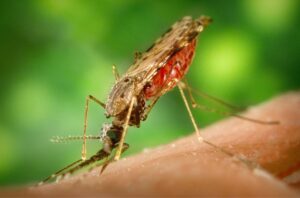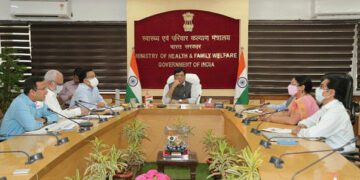
By Dr. Amin Kaba
In 2019, there were an estimated 229 million cases of malaria worldwide, with about 409,000 deaths worldwide. Children aged under 5 years of age are the most vulnerable group affected by malaria and in 2019, they accounted for 67% (274,000) of all malaria deaths worldwide. India contributed to the largest drop in cases in the WHO’s South-East Asia region — six million in 2019 from approximately 20 million in 2000.
Early diagnosis and treatment of malaria reduces disease, prevents deaths and contributes to reducing transmission. Protection from mosquito bites is the best way to prevent this disease. Thus it is important to take the appropriate measures at individual and community levels to stop the spread of this harmful disease. Community level interventions like regular spraying of repellants in prone areas, disease surveillance, geo mapping and timely intervention go a long way in malaria control. People should also take the following measures apart from being careful and vigilant like:
— Wearing full sleeve protective clothing
— Spraying insect repellants on your exposed skin.
— Using a mosquito net over the bed. For additional safety, the mosquito nets should be treated with repellants or insecticides.
— Using mosquito repellant patch on clothing is a good way to prevent mosquito bites.
— Keeping home and surroundings clean without any junk. Looking out especially for flower pots, discarded cans, construction sites etc. All such places where water can stagnate and create a breeding ground for mosquitoes.
— Keeping children protected and indoors especially during dusk and dawn when mosquitoes are most active.
— Keeping an eye out for the symptoms like fever with high temperature. As soon as one finds out any possible signs of malaria, consult the doctor immediately. Follow the prescriptions of the doctor diligently and complete the treatment.
In addition, preventive chemotherapy (prophylaxis) i.e use of medicines, either alone or in combination, to prevent malaria infections and their consequences is another method. However this is usually for people traveling from countries which have a low or no prevalence of malaria in their home country to a malaria endemic or high prevalence country.
A new weapon that has become available in the armamentarium is the novel malaria vaccine, Mosquirix. The pilot studies have demonstrated about 40% reduction in malaria episodes, a substantial reduction in severe malaria cases and one death averted for every 200 vaccinees. Though, the case is different in context of India as approximately half of malaria burden in India is due to P. vivax, so these cannot be prevented with this P. falciparum vaccine.

Epidemiologically, India does not have exclusive P. falciparum or P. vivax areas in the country but rather has a mix of multiple species. Therefore, a vaccine against P. falciparum only will create a false sense of security and in case a vaccinee contracts P. vivax malaria; it will give rise to lack of trust and faith. The malaria vaccine is presently recommended for high-transmission settings, like African countries. We need a lot of research in this area to look at its relevance in Indian settings.
The writer is Consultant Paediatrician, Masina Hospital, Mumbai
Follow Health In Five on LinkedIn, Facebook, Twitter & Instagram
Subscribe on WhatsApp & Telegram to receive real time updates







































